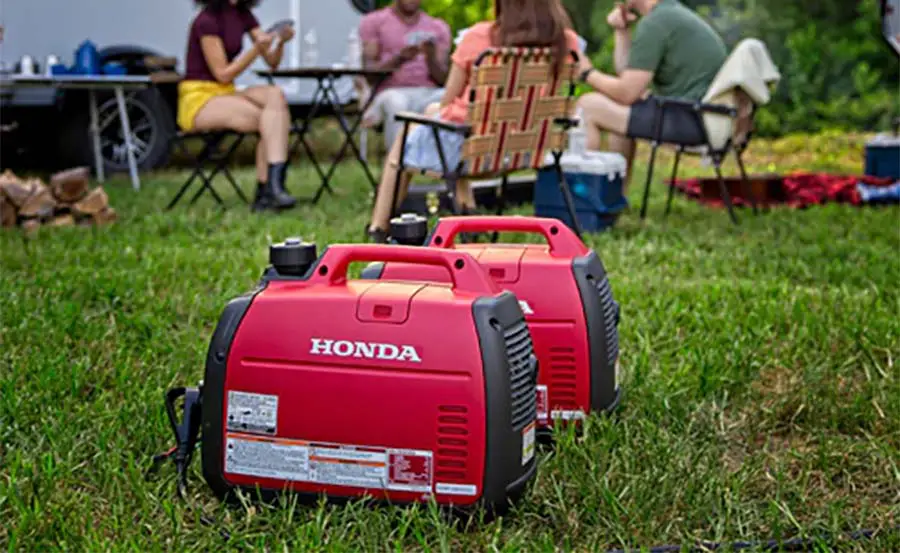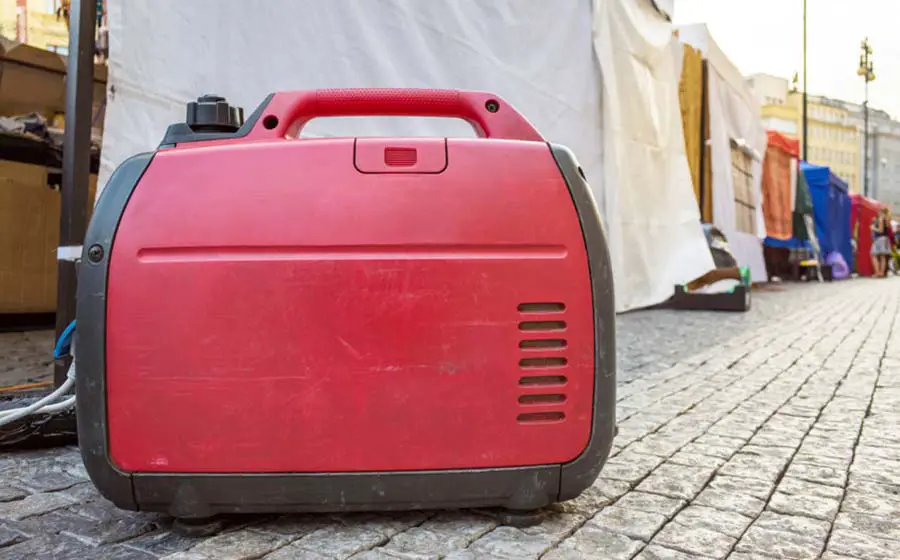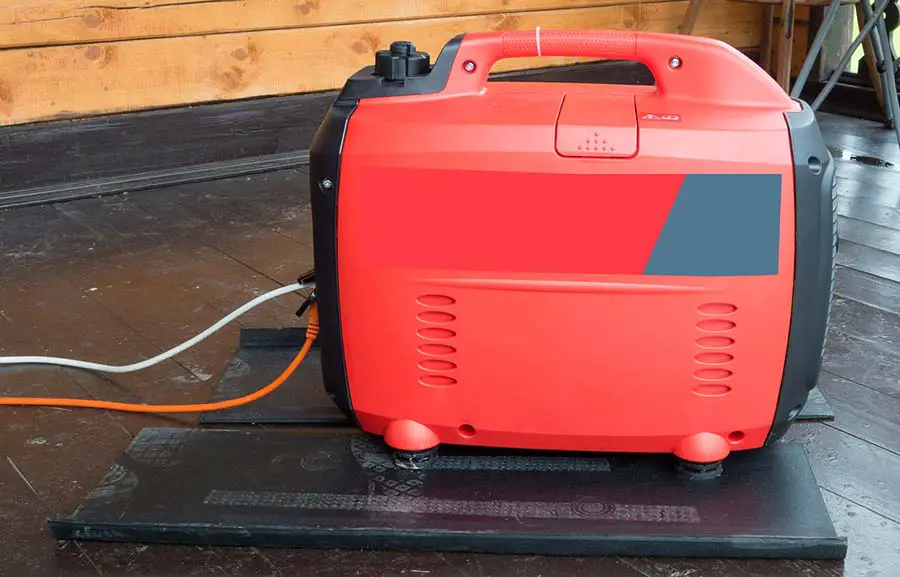
A 1000 Watt Honda generator has a pretty low capacity in the grand scheme of things. However, it can still run several electrical appliances with low and medium energy demands. Knowing when it is appropriate to use the 1000 watt model enables you to take advantage of this Honda generator’s advantages.
A 1000-watt Honda generator has enough power to run many small household appliances, but usually not simultaneously. Most lights, computers, laptops, small refrigerators, coffee makers, slow cookers, and televisions require less than 1,000 watts to start up and run.
This article discusses some of the things you should consider when operating a low-capacity generator, how to determine the energy demands of electrical appliances, and some of the items you can run using a 1000 Watt generator.
What a 1,000-Watt Honda Generator Can Power
Below are some of the things that a Honda 1000 Watt generator could run. All the examples assume that the generator has a maximum wattage of 1000 Watts.
| Household Appliance | Typical Wattage (W) |
|---|---|
| Lights | 5-150 |
| Refridgerator | 50-100 |
| Ceiling fan | 55-100 |
| Slow cooker | 75-210 |
| Computers/Laptops | 60-175 |
| Coffee maker | 300-600 |
| Phone | 2-6 |
| Television | 50-300 |
1. Lights
A typical light bulb will use anywhere from 5 to 150 watts.
Suppose you have many 75-watt bulbs. In that case, your 1000 Watt generator could run about 13 such bulbs at any given time, provided nothing else is on.
2. Refrigerator
Refrigerators tend to consume varying energy levels depending on their size and energy efficiency.
A mini-fridge can use as little as 50 to 100W while the standard fridges can use as much as 350 to 780 W. So, assuming that you have a mini-fridge with a running wattage of 100 Watts and a starting wattage of 800 Watts, you can only have one working on a 1000 Watt generator.
3. Ceiling Fan
If you want to continue staying cool even when electricity is off, you could also opt to run your ceiling fan. Usually, ceiling fans tend to consume between 55 and 100 W. It depends on the speed setting the fan is using and its size.
Suppose you had a ceiling fan rated 80 Watts. In that case, you could keep 12 of them on if you were not running any other appliances. However, if each fan had a surge wattage of 100 Watts, you may only be able to start 10 of them simultaneously.
4. Slow Cooker
A slow cooker consumes energy at varying levels depending on its setting and energy efficiency. But most will require anywhere from 75 to 150 watts on low and 150 to 210 watts on high. However, some can consume as much as 300 Watts.
Now, suppose you want to cook food, but the light is out, and you have a slow cooker with a maximum wattage of 200 watts. In that case, you may be able to use as many as five different sets of meals in several appliances if nothing else will be running for that period.
However, it could be tricky if you want to run a slow cooker with other devices. For example, if you have a fridge with a starting wattage of 800 Watts, you could only run that with one slow cooker so long as the latter device’s surge wattage is 200 Watts or less.
5. Computers/Laptops
Regular computers usually consume more energy than laptops. The former can use about 175 watts, while the latter uses about 60 watts. Since these devices are low-energy devices, you could power many of them using a 1000 Watt Honda generator.
For example, you could power about five regular computers simultaneously if nothing else is running. However, if you only use laptops, you could manage to run as many as 16 laptops at any given time.
6. Coffee Maker

Your coffee addiction should not make you suffer if you keep experiencing power outages. If you have an energy source that produces at least 750 watts, you could brew a few cups of your favorite drink.
That said, coffee makers tend to be high-energy devices, so you should only run them for a limited time if you want to operate other appliances. For example, you cannot run it simultaneously with a standard fridge. But if your mini-fridge is already running, since some coffee makers only require 300 to 600 watts of electricity, you could use those and still keep your food cool.
7. Phones
Phones are also low-energy electrical devices. On average, they only consume about 2 to 6 watts when charging.
If you were in the business of charging phones on a campground or during outdoor events, you could charge as many as 166 phones simultaneously with a 1000 Watt Honda generator. However, nothing else should be running at that time.
Suppose you are a family of five, and each person has one phone. In that case, you would consume up to 30 watts when charging your devices. That leaves 970 watts for other appliances. In that case, you could power five lights of 50 watts each, cook a family meal on your 200-watt rated slow cooker, keep your 350-watt rated mini fridge running (assuming you started it first), run your 100-watt ceiling fan, and charge one laptop simultaneously.
8. Cable TV
While most people assume that TVs consume very little power, it is not always the case. Granted, TVs consume reasonable energy of anywhere from 50 to 300 watts, depending on the type of TV and its size. However, a cable DVR box consumes 35 watts of power when not in use. And some consume as much as 500 watts when in use!
But when you have a 1000 watt Honda generator, you can afford to get some TV entertainment even during power outages.
Suppose you have a cable DVR box -TV combo that consumes a total of 600 watts. In that case, you could watch TV, switch on a few lights with a total wattage of, say, 150 to 200 watts, and slow cook your food. Alternatively, you could watch the TV in the dark, stay cool using a 100-watt fan, slow cook your food, and charge a laptop and a few phones.
Should You Use a Low-Capacity Generator?
There is something to be said about low-capacity generators, such as a 1000 Watt Honda generator. While such an engine will not run many high-energy appliances, it offers several advantages worth considering.
Below are some of the reasons why you should consider buying and using a 1000 Watt Honda generator:
1. Easy to Transport
If you need a generator you can carry by hand and easily transport from one place to another, you should opt for smaller and lighter versions. Also, you need to remember that when a generator is full of fuel, it will be heavier than its weight when empty. And that is where the 1000 Watt Honda generator comes in.
Typically, powerful portable generators weigh anywhere from 200 to 300 pounds. So, while they are movable, they are not necessarily light. For that reason, some of them come with wheels to improve their mobility.
However, some generators are much lighter and weigh about 70 pounds or less. If you intend to drag one with you on your outdoor trips or to engage in outdoor work, it would be best to ensure that they weigh as little as possible for your convenience.
Honda has portable generators that weigh as little as slightly less than 30 pounds. So, even when the generator has fuel, it will still be pretty portable.
2. Less Noise

Noise is an ongoing matter of concern for anyone looking to purchase a generator. There is always the risk of ending with something noisy that affects your hearing negatively and annoys the Homeowners’ Association (HOA).
An average generator usually produces about 70db to 100db of noise when heard from about 23 feet away. Unfortunately, that could become a massive problem over the long term.
Luckily, technological advances have led to the development of inverter generators, which combine the generator and engine components to function as one. Instead of running at full blast all the time, they meet the energy demand by electronically throttling the engine up and down.
In addition, they take AC power, convert it into DC power, and then build that back up to a more stable AC power version for all sorts of electrical appliances.
As a result of how they work, these generators are efficient, eco-friendly, and quieter. So, if you are looking to reduce noise levels outdoors while operating a generator, you would do well with an inverter generator like the 1000 Watt Honda generator.
3. More Affordable
Generally, the larger and more powerful a generator is, the more expensive it is to purchase.
Portable generators that produce 2000 Watts or fewer tend to cost an average of $200 to $650. However, inverter generators of a similar size and capacity are not always as affordable. Some of them can be pretty expensive due to their advanced technological features.
While these features may push up the purchase costs upfront, they will save you money in the long term by cutting the fuel costs and increasing durability. In any case, the prices of low-capacity generators such as the Honda 1000 Watt generator are still lower than those of more powerful generators. In addition, they produce less noise, which makes them an excellent option within small properties where there may be severe noise restrictions.
4. Longer-Than-Average Running Time
How long a generator runs depends on the amount of fuel it can hold, how fuel-efficient it is, and the load.
For example, the EU1000i Honda inverter generator has a 0.6-gallon tank. And depending on the load, it can run anywhere from 3 to 6.8 hours before you need to refuel. That is a pretty decent running time for that amount of fuel time.
Determining the Energy Demands of Electrical Appliances
A 1000 Watt Honda generator can produce 1000 Watts of energy. But what does that mean for your energy needs and the generator’s ability to meet them?
What Is Wattage In a Generator?
In a generator, watts or wattage (W) refers to the unit of power that a portable generator can supply at any given time. And 1000 Watts equals 1Kilo Watt or kW.
Therefore a 1000 Watt generator can supply up to 1000 Watts of power at any given time at 100 percent load. And all the appliances you power using such an engine should not exceed that amount.
It is worth noting that most appliances have two types of wattages:
- running or rated watts
- surge or starting watts.
Surge watts refer to the wattage that an appliance requires to start operating. On the other hand, rated watts refer to the wattage that a device needs to continue operating continuously. Usually, the starting watts tend to be higher because it takes more work to start an appliance than continue running it.
To determine how well your generator can run, you should add up all the running watts of the appliances you need to operate with backup power. That value represents the minimum wattage that your generator should have.
What If Appliances Only List Horsepower?
Horsepower (hp) is another way to measure a generator’s power capacity. It refers to the power you require to move 33,000 pounds for a distance of one foot in one minute. And in terms of watts, it represents 746 watts. So a 10Hp generator can produce approximately 7460 Watts.
What If Appliances Only List Amperes and Volts?
If you have no idea of the wattage of your electrical appliances but have ampere (A) and volt (V) measurements, you can use that to determine what your 1000 Watt Honda generator will run.
The standard formula for getting power in watts using amperes and volts is:
Power (W) = Ampere (A) X Volts (V)
For example, if your TV draws about 5 A of electric current and has a standard voltage of 120V, it will require 600 Watts of power to run.
What If Appliances Only List British Thermal Units (BTU)?
Some electrical appliances use the British Thermal Unit (BTU) per hour to state their energy requirements. BTU traditionally refers to the amount of thermal energy one needs to raise the temperature of one pound of water by one degree Fahrenheit at sea level.
Some of the appliances that usually use BTU include:
- Air conditioners
- Electric heaters
- Cooking appliances
- Gas fire pits
So, if your electrical appliance uses BTU instead of wattage or amperes and volts, you would need to convert it.
The standard formula is:
1 BTU = 0.293 W
Alternatively, you could use the formula:
1 W = 3. 41214 BTU/h
Final Thoughts
While a 1000 Watt Honda generator does not seem like much, it can be helpful and power quite a few common household appliances. However, it would be best to factor in the starting and running wattages and then determine the order in which you will power these devices.
So, consider powering gadgets at different times. If you do not need to use an appliance at a given time, consider letting it stay switched off. You could get a lot done by prioritizing and scheduling your energy usage, especially on a limited fuel supply if you’re experiencing a power outage.

